Define organelle
organ of a cell; intracellular structures that do a specific function
Define Cell
basic structural and functional unit of living organisms
cell membrane (plasmalemma)
external boundary of cell; regulates flow of materials into and out of the cell; site of cell signaling
lysosomes
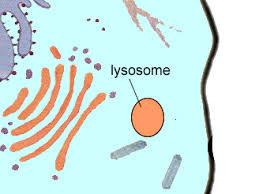
contains digestive enzymes of many varieties; "suicide sac" of the cell
mitochondria
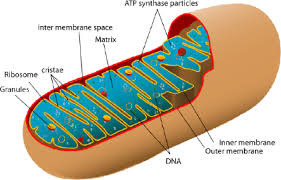
scattered throughout the cell; major site of ATP synthesis
microvilli
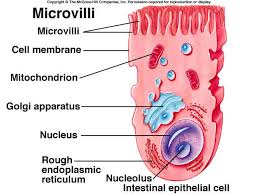
slender extensions of the plasma membrane that increase its surface area
inclusions
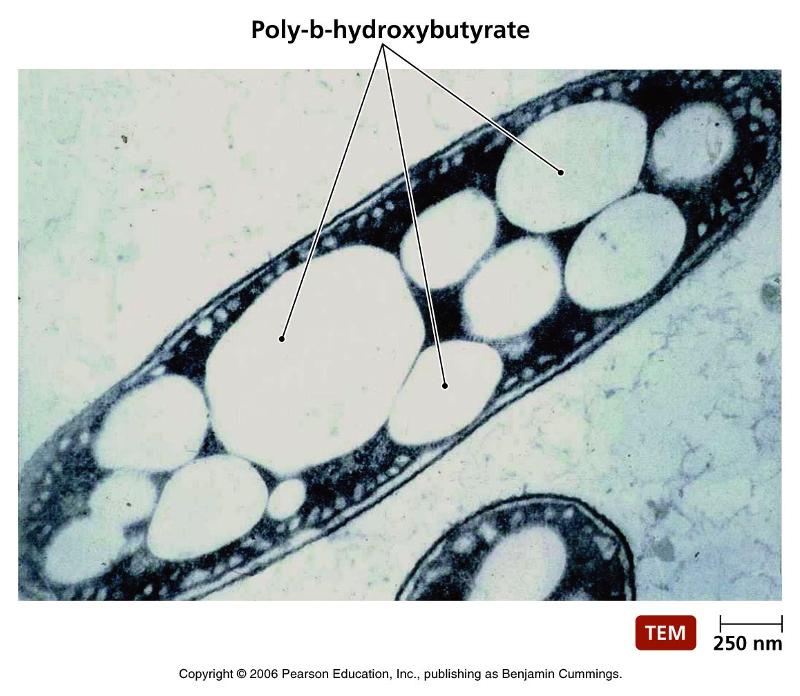
stored glycogen granules, crystals, pigments and so on
Golgi body
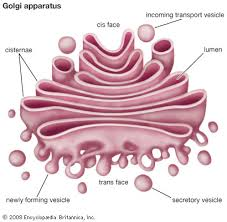
"packaging plant" produces vesicle -> balls of membrane... produce lysomes & peroxisomes. membranous system consisting of flattened sacs and cesicles; packages protiens for export
nucleus
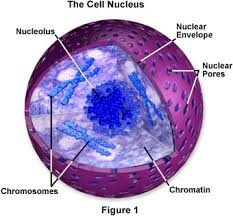
control center of the cell; necessary for cell division and cell life. "control center" of cell. contains chromosomes. - largest organelle. - usually near center of cell. - has double membrane, nuclear envelope. - membrane has openings, nuclear pores. - contains a dark spot -> nucleolus, ribosomes are produced. Typically 1 nucleus per cell
Exceptions to 1 nucleous per cell
1. red blood cells - annucleated 2. placental cell - binucleated 3. skeletal muscle cell - multinucleated
centrioles
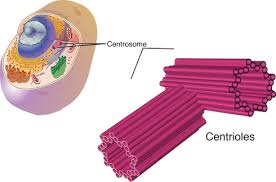
pair of star shapped tubes. - Made of microtubules. - help separate chromatids during cell division. two rod-shaped bodies near the nucleus; associated with the formation of the mitotic spindle
nucleolus
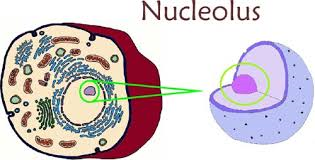
"control center" of cell. contains chromosomes. - largest organelle. - usually near center of cell. - has double membrane, nuclear envelope. - membrane has openings, nuclear pores. - contains a dark spot -> nucleolus, ribosomes are produced. Typically 1 nucleus per cell
microfilaments
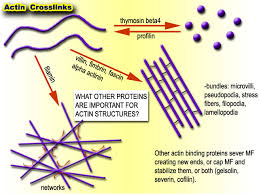
contractile elements of the cytoskeleton
endoplasmic reticulum
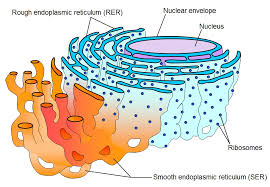
membranous system; involved in intracellular transport of proteins and synthesis of membrane lipids
ribosomes
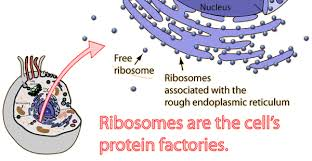
translation process of protien synthesis - chromosomes have genes that code for protiens -> used to express genes. Attached to membrane systems or scattered in the cytoplasm; site of protein synthesis
chromatin
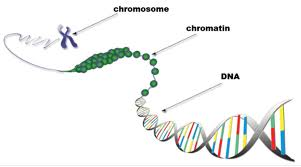
threadlike structures in the nucleus; contain genetic material (DNA)
peroxisomes
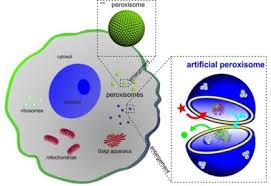
site of free radical detoxification
significance of the red blood cell being anucleate
they cannot reproduce & have infinite life span
did anucleate red blood cells ever have a nucleous
Yes - during development
what is the importance of cell division
allows for growth and repair
division of the _____ is refered to as mitosis
nucleus
cytokinesis is division of the ____
cytoplasm/ organelles
the major structural difference between chromatin and chromosomes is tht the latter are _____
duplicated & condensed
Chromosomes attached to the spindle fibers by undivided structures called _____
centromere
if a cell undergoes mitosis but not cytokinesis, the product is
binucleated cell
the structure that acts as a scaffolding for chromosomal attachment and movement is called the
spindle fibers
_____ is the period of cell life when the cell is not involved in division
interphase
two cell populations in the body that do not routinely undergo cell division are ___ & ___
Skeletal muscle & neurons
chromatin coils and condenses, forming chromosomes.
prophase
the chromosomes are V shaped
anaphase
the nuclear envelope re-forms
teleophase
chromosomes stop moving towards the poles
teleophase (late anaphase)
chromosomes line up in the center of the cell
metaphase
the nuclear envelope fragments
prophase
the mitotic spindle forms
prophase
DNA synthesis occurs
interphase
Centrioles replicate
interphase
chromosomes first appear to be duplex structures
prophase
chromosomal centrometers are attached to the kinetochore fibers
metaphase (late prophase)
chleavage furrow forms
anaphase
the nuclear envelope is absent
metaphase & anaphase
what is the physical advantage of the chromatin coiling and condensing to form short chromosomes at the onset of mitosis?
easier to move the separate daughter chromosomes to he newly forming cells.
cell membrane - purpose & structure
purpose - defines boundary of cell
keeps all alive by controlling what can and cannot get in and out
protiens - 2 types
integral - go through membrane
peripheral - on 1 side only
protiens uses
-channels/pores - intake nutrients - carriers/ transporters - receptor-input - cytoskeleton anchor (shape) - enzymes - cell identity markers - cell connectors - fluid mosaic membrane
carbohydrates
blood type
cholesterol
- cell movements across membrane.
What are passive movements
molecules spread through the membranes. Molecules move from an area of high concentration to an area of low concentration, down a concentration gradients. As molecules diffuse, a state of equilibrium will occur - simple diffusion. - channel mediated diffusion. - carrier mediated diffusion. - osmosis. - dialysis. - filtration.
passive movements - simple diffusion
- move directly through phosipolipids. - move from high concentration to low concentration via driving force. - things that can do this are fat soluable... ie. h20, 02, co2, n2, steroids
Passive movements - channel medinated diffusion
- requires channel/pore. - membrane has negative charge. (cations would get stuck/anions would repel)
Passive movements - carrier mediated diffusion
- requires a carrier. - modify substance after it crosses... ie. glucose turns to glucose 6 phosphate. ATP + Glucose -> ADP + glucose 6 phosphate
Passive movements - Osmosis
diffusion of water driven by solute concentration (solute-protein, sugar, salt)
passive movements - osmosis - hypertonic
*Osmosis* net water movement out, cell shrinks
passive movements - osmosis - hypotonic
*Osmosis* net water movement in, cell expands - lysis explodes
passive movements - isotonic
* no osmosis* same concentration - no water movement
passive movement - dialysis
* Osmosis * passive through membrane based on pore size - peritoneum dialysis - shunt tube - blood vessels - in abdominal cavity - as blood flows through blood vessels & filter through poresin capilaries
passive movement - dialyisis - filtration
* Osmosis* in kidney - movement across a membrane due to pressure difference.
Active methods & types
1 - pumping a. requires ATP * carrier molecule required * Moving opposite of concentration (lower to higher) * Na/K pump 2. a.
Membrane "Shape" Organs - types
Endocytosis * Exocytosis
active transport - endocytosis
moves substances into the cell by means of a vesicle.
active transport - endocytosis - phagocytosis
cell eating. large particles are engulfed by plasma membrane and enter the vesicle - the vesicles fuse with lysosomes, which digest the particles
active transport - endocytosis - pinocytosis
cell drinking. fluid and the substances dissolved in it enter the cell
Active transport - Endocytosis - receptor mediated
receptor molecules recognize substances to be brought into the cell
Active transport - Exocytosis
movement out of the cell - contains secretory vesicle - neurotransmitters & some hormones released this way. large molecules (proteins) can leave the cell even though they are too big - enclosed in vesicle then pulled to plasma membrane via cytoskeleton.
Role of active transport processes
a. active transport requires energy use by the membrane b. pumps - concrentrate substances on one side of membrane, as when stroing an ion inside of an organelle c. vesicle-mediated (endocytosis, exocytosis) - move large volumes of substances at once, as in secretion of hormones and neurotransmitters
cell - cell connections
a. tight junctions - prevents movement between cell b. desmosomes - connection that allow movement together c. gap juncions have tubes(connections) that allow direct cell to cell communication ie. heart
cell membrane modifications
1. microvilli 2. cilia 3. flagellium
cell membrane modifications - microvilli
extensions that increase the cells of surface area
cell membrane modifications - cilia
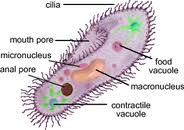
hair like structure - beat = move substances over their surface ie lungs and fallopian tube
cell membrane modifications - flagellium
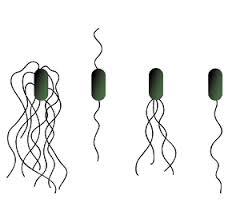
long, whip like tail ->provides mobility ie. sperm tail
Ribosome process
DNA(code) -> RNA(Copy) -> Protien ribosome translate the RNA codes. Ribosomes are formed in nucleus
DNA process
Chromatin -> Chromosomes -> Chromotids. DNA = genetic code. stands for Deoxyribonucleic Acid. 2 strands of nucleotides twisted around each other in a double helix. Each side consists of sugar & phosphate. Runs - base pairs
DNA - T
thymine
DNA - A
Adenine
DNA - C
Cytosine
DNA - G
Guanine
Chromotin
DNA wraps around protein beads called histones. Form loose, tangled strains, normal form in cell
Chromosomes
formed in division. X shaped structures. condensed duplicated chromotin. human cells have 23 pairs & 46 chromosomes. xy = men. xx = woman
centromere
middle, central part of chromosome
chromatid
half of the chromosome after it divides - also called sister chromatids (daughter chromosomes)
Cell life cycle - 4 phases
G1 - growth - normal cell function. S phase - Synthesis - DNA replicates, centride replication. G2 - growth 2 - normal activity - final preparations for division. M - Mitosic - division of nucleous, cytoplasm & organelles.
Metabolism
set of chemical reactions in a cell. Catabolism & Anabolism
anabolism
build up reactions. creates A+B -> AB + H20
catabolism
breaksdown reactions. AB + Hw0 -> A+B - hydrolysis, digestion, food (cellular respiration pathways) -> ATP
mitotic cell division - Mitosis is?
Cell Division process - makes exact copies of cell for growth and repair
mitotic cell division - Mitotic base pairing - 5 phases of Mitosis
IPMAT - Interphase, Prophase, Metaphase, anaphase, telophase
mitotic cell division - Interphase - G, S, & G2
DNA synthesis - production of cytoplasm - replication of centrosomes and DNA in anticipation of cell division
mitotic cell division - Interphase - DNA Synthesis - Base Pairing
DNA strand uncoils and strands come apart - strands are rebuilt in opposite directions, 1 strand strand that has telomeres. Telomers are segments at the end of DNA, that rebuild by the enzyme telomerase. T=A A=T G=C C=G -> will always be prepaired together, on opposite sides. 2 new strands are chromatids
mitotic cell division - Prophase
"before phase" 1. chromatin condenses to chromosomes 2. nuclear membrane disappears 3. nucleoi disappear 4. centrioles begin to move to opposite ends, spidle fibers form between them
mitotic cell division - Metaphase
"position changing phase" 1. chromosomes attach to spindle fibers 2. chromosomes align to the middle of cell
mitotic cell division - anaphase
"apart phase" 1. chromosomes split into chromatids 2. chromatids pulled to cellic pole by centrioles & spindle fibers. centromere of each chromosome splits to form 2 chromosomes, each consisting of a single DNA molecule 4. each chromosome is pulled toward the nearest pole to form 2 separate, but identical, pools of genetic information
mitotic cell division - telophase
"end phase" 1. division of cell membrane -> furrowing 2. cytokinesis -> division of cytoplasm/organelles 3. chromatid becomes chromotin 4. nuclear membrane reforms 5. nucleoli reappear 6. each daughter cells begin interphase to develop into mature cell
summary of Mitosis
1. DNA replication 2. 1 round of division 3. forms 2 identicle cells (daughter cells)
Why do cells divide
1. get too big - problems surface area to volume. 2. growth factors, a. HGH - human growth hormone b. PDGF - platelet derived growth factor. 3. cyclic factors
What stops division
1. removal of growth factors 2. removal of cyclic factors 3. contact inhibition 4. natural killer (NK) cells 5. Tumor suppressor Gene (TSG) protiens
Cancer
uncontrolled cell growth -> crowd out healthy tissue, impair normal function cells change methology, cancer can spread
Causes of Cancer
1. carcinogens 2. Radiation 3. Oncogenes 4. loss of TSG 5. NK cell problems 6. Age 7. Virus infection -> that have oncogenes themselves